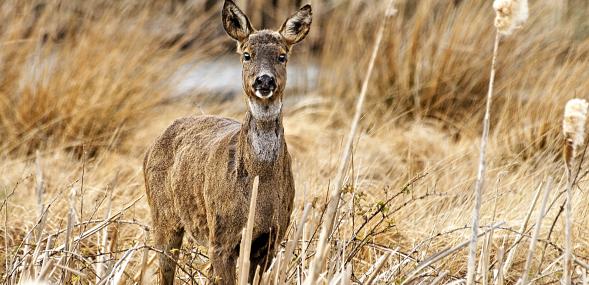Our most common native deer, Roe Deer tend to be solitary in summer, but can form small, loose groups in winter. The males have relatively short antlers, typically with six points. They begin to grow their antlers in November, shedding the velvet from them in the spring. By Summer, they are ready for the rutting season. After mating, they shed their antlers in October and begin to grow a new set. Roe Deer live in areas of mixed countryside, with farmland, grassland, heathland and woodland.
Roe Deer are not considered to be rare in the UK, but the habitats that they favour are declining - our grasslands, field margins and woodlands are all under threat. Encouraging farmers and landowners to have a wildlife-friendly approach, The Wildlife Trusts are working towards a Living Landscape: a network of habitats and wildlife corridors across town and country, which are good for both wildlife and people. You can support this greener future by joining your local Wildlife Trust.
